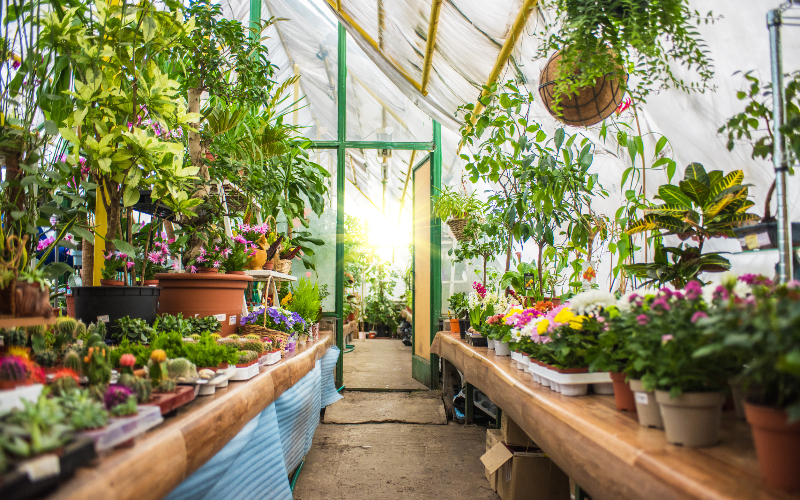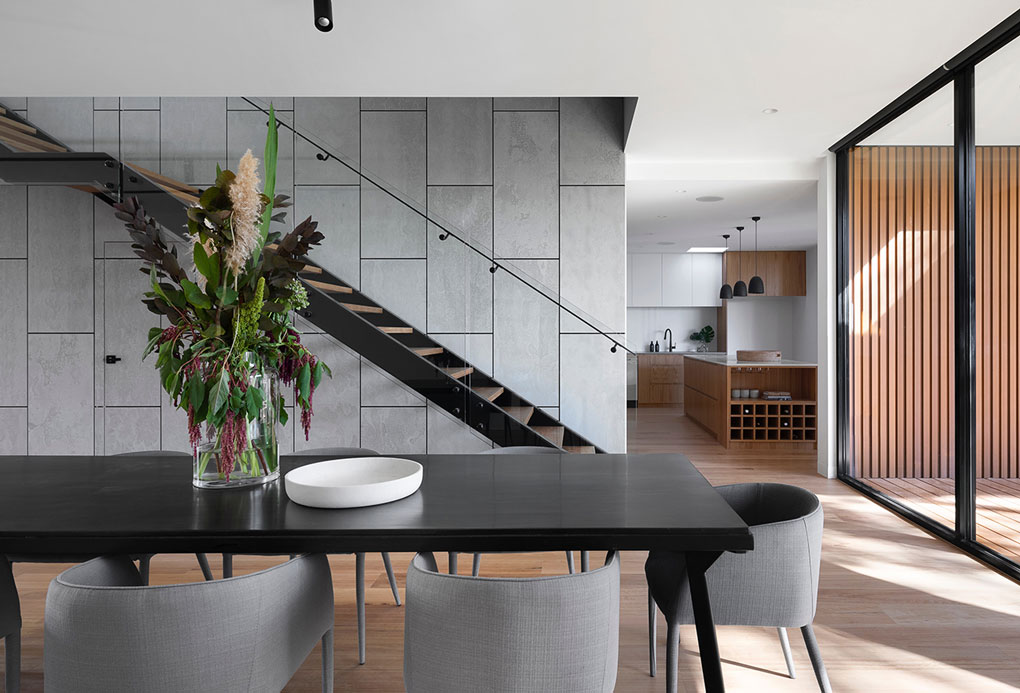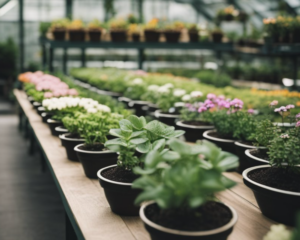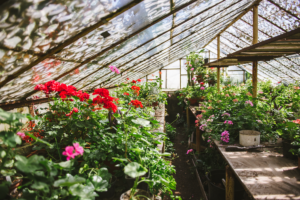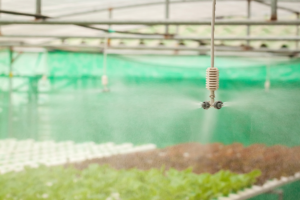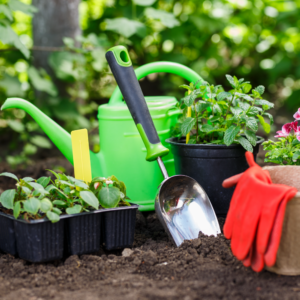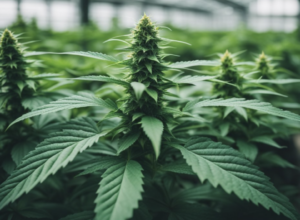Planting in a greenhouse can seem like a big task, but it’s really about timing and planning. The best time to start planting in your greenhouse is about six to eight weeks before the last expected frost. This gives seeds enough time to grow before they can be moved outdoors or before the weather gets too hot.
Vegetables like tomatoes, cucumbers, and peppers thrive in the controlled environment of a greenhouse. Herbs and flowers also have a chance to grow strong before being transplanted. Pay attention to the growing season of each type of plant, and you’ll have fresh produce all year long.
Starting seeds in a greenhouse allows for more control over their environment, which means stronger, healthier plants. The warmth and protection from frost enable early planting, leading to an extended growing season. Trust the greenhouse to give your plants the best start they can get.
Selecting Plants for Your Greenhouse

Choosing the right plants for your greenhouse can maximize your growing potential. It’s important to think about the temperature needs of each plant and whether it thrives in warm or cold conditions.
Warm-Season vs. Cold-Season Plants
Warm-season plants need higher temperatures to grow well. These include tomatoes, peppers, beans, cucumbers, eggplants, and melons. They thrive in temperatures between 70-85°F.
Cold-season plants, on the other hand, prefer cooler temperatures. Lettuce, spinach, kale, cabbage, cauliflower, radish, and parsnips grow best in temperatures between 55-65°F. Knowing the seasons helps in planning your planting schedule.
Growing Vegetables and Fruits
For vegetables, warm-season favorites like tomatoes, peppers, and eggplants not only love the warmth but also need plenty of sunlight. Cucumbers and squash are other popular choices.
Cold-season vegetables like lettuce, spinach, and kale can be some of the first plants you grow in your greenhouse. Cabbage and cauliflower are also great choices for cooler temperatures.
For fruits, melons do well in a sunny, warm greenhouse, while berries such as strawberries can grow pretty much throughout the year with the right care.
Cultivating Herbs and Flowers
Herbs are a great addition to any greenhouse. Parsley, cilantro, and similar herbs do well in moderate temperatures and can be harvested multiple times. These herbs are not as temperature-sensitive as some vegetables and fruits.
Flowering plants such as marigolds and petunias not only add beauty but can also help repel pests. Begonias and pansies do well in cooler temperatures, making them a good choice for a greenhouse with variable conditions.
These guidelines will help in selecting plants that thrive in your greenhouse conditions, aiming for healthy growth and bountiful harvests.
Planning Your Planting Schedule
When planning a planting schedule, it’s important to consider the last frost date and the specific needs of each plant. Seeds often need to be started indoors before transitioning outdoors.
When to Start Seedlings Indoors
Start seeds indoors based on the last frost date for your region. Check seed packets for specific timelines. Most seeds need about 6-8 weeks to germinate and grow before they can be transplanted outdoors.
Planting calendar tools can help you determine the exact planting time. They guide you on when to start seeds indoors for various plants like tomatoes, peppers, and herbs. Ensuring proper seed germination temperatures is crucial. Keep seedlings in a warm, sunny spot or under grow lights.
Transitioning to the Outdoor Garden
Before moving seedlings outdoors, the plants need to be hardened off. This process takes about a week. Gradually expose young plants to outdoor conditions, increasing the time they spend outside each day.
Know the last frost date in your area to decide when to begin this transition. Check seedlings daily for signs of stress during this period. Place them outside in a sheltered spot at first to protect from wind and harsh sun.
Succession Planting and Crop Rotation
Succession planting ensures a continuous harvest. Planting new seeds every few weeks keeps your garden producing. Check your planting calendar to space out planting times appropriately.
Crop rotation helps manage soil nutrients and prevent pests. Rotate plant families yearly to avoid depleting the soil of specific nutrients. For instance, follow up legumes with crops that need nitrogen, like leafy greens. Keep a record of what you planted in each bed to track rotations.
Frequently Asked Questions
Planting in a greenhouse can vary based on timing, temperature, and climate zones. Let’s address some common questions about greenhouse planting.
What’s the best time to start seeds in a greenhouse?
The best time to start seeds in a greenhouse is 4-6 weeks before the last expected frost date. This timing helps ensure seedlings are robust enough for transplanting.
When can you typically start planting in an unheated greenhouse?
In an unheated greenhouse, it’s possible to start planting cool-season crops like lettuce and spinach 3-4 weeks before the last frost date. Warm-season crops should be planted after the danger of frost has passed.
How does the planting schedule for a greenhouse differ by climate zone?
In warmer zones, you can start planting earlier in the year. In cooler zones, you may need to wait longer. Knowing your specific climate zone helps in planning the optimal planting schedule.
Do I need to wait until after the last frost to plant in a greenhouse?
No, you don’t always need to wait. Greenhouses protect plants from frost, letting you start certain crops earlier. Yet, for some tender plants, waiting until after the last frost may still be beneficial.
When to Start Planting in Your Greenhouse 
Conclusion
A greenhouse unlocks a world of possibilities for gardeners and plant enthusiasts, allowing you to extend the growing season and cultivate a wider variety of plants year-round. By carefully planning your planting schedule, selecting suitable plants for your climate conditions, and providing the ideal environment, you can maximize yields and enjoy fresh produce straight from your own greenhouse garden. Keep your greenhouse thriving by continually learning tips and techniques through our library of informative articles. From seed-starting basics to advanced growing methods, we’ve got you covered with all the greenhouse gardening knowledge you need. Read our other helpful guides to take your greenhouse gardening skills to new heights and reap an abundance of delicious harvests for years to come!

